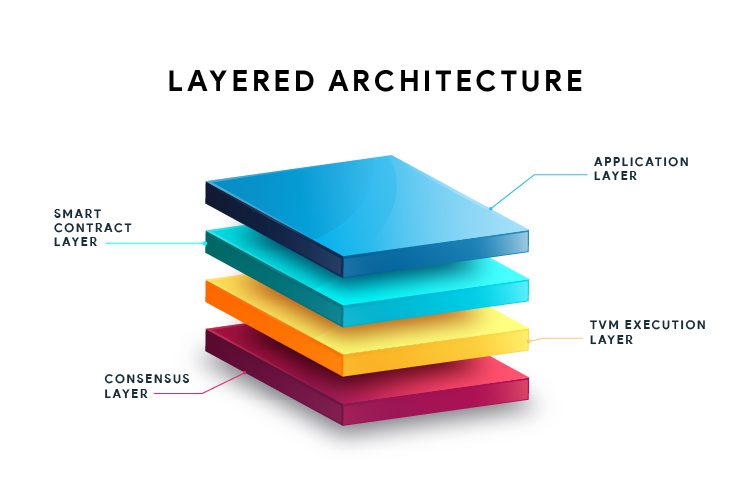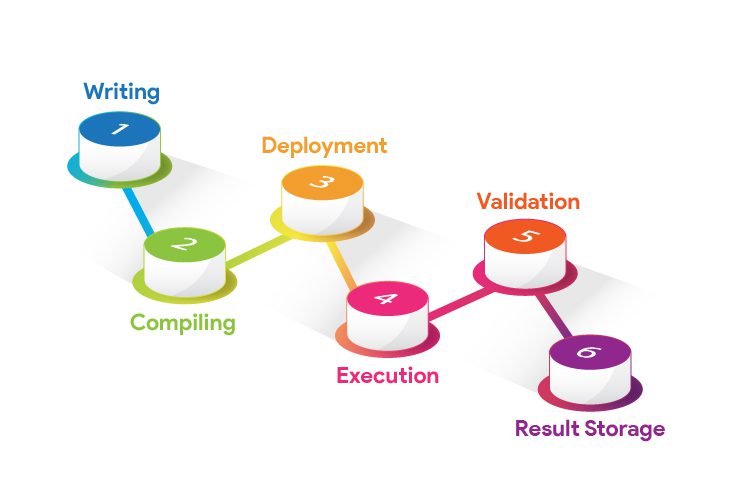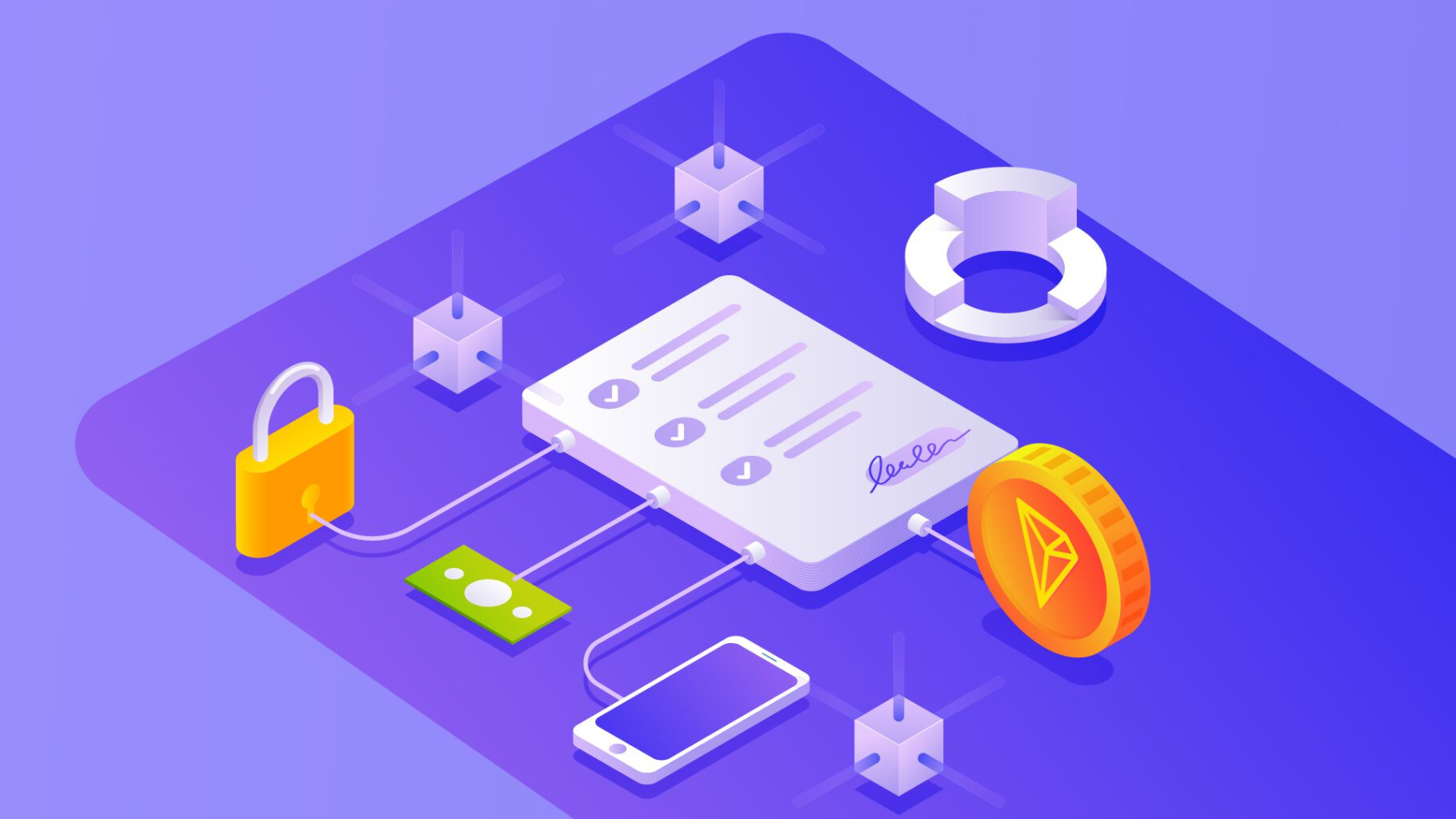Smart contracts have transformed the way decentralized applications (dApps) are built, enabling automation, transparency, and security on blockchain networks. Among the leading platforms, Tron has emerged as a significant player, offering developers fast, cost-efficient, and scalable solutions. This blog provides an in-depth look at Tron smart contract protocols, their design, implementation, use cases, and the challenges developers face.
Exploring Tron Blockchain Agreements, dApps, and Their Capabilities
Tron is a decentralized, blockchain-based operating system founded by Justin Sun in 2017. It is well-known for providing high throughput and low transaction fees, making it a strong competitor to Ethereum in terms of decentralized app (dApp) adoption.
A Tron smart contract is a self executing piece of code stored on the Tron blockchain. It automates transactions and logic without intermediaries, ensuring trustless interactions between parties. The contracts are built on Tron Virtual Machine (TVM), which is lightweight and compatible with Ethereum’s EVM, allowing Solidity-based development.
Tron smart contracts are particularly popular in industries like DeFi, NFT marketplaces, and gaming due to their efficiency and scalability.
Key Concepts and Terminology for Tron Blockchain Contracts
Before diving deeper, developers should familiarize themselves with essential terminologies in the Tron ecosystem:
- TRX (Tronix): The native cryptocurrency of the Tron blockchain used for transactions and smart contract execution.
- TVM (Tron Virtual Machine): Execution environment for running smart contracts, fully compatible with Solidity and EVM.
- TRC-10 & TRC-20 Tokens: Token standards on Tron, similar to ERC-20 on Ethereum. TRC-20 is widely used in DeFi and dApps.
- Energy & Bandwidth: Resource models in Tron for executing transactions and contracts. Energy is consumed for smart contract operations, while bandwidth is used for basic transfers.
- Delegated Proof of Stake (DPoS): Tron uses this consensus mechanism, relying on Super Representatives (SRs) elected by token holders.
Understanding these terms helps developers grasp the fundamentals of smart contract protocols.
Tron Blockchain Contract Architecture
The design of Tron smart contracts revolves around efficiency, interoperability, and scalability.
Key Elements of the System Design:
- Layered Architecture:
- Application Layer: dApps and user interfaces.
- Smart Contract Layer: Business logic coded in Solidity.
- TVM Execution Layer: Runs contracts with optimized energy consumption.
- Consensus Layer: DPoS ensures fast block validation.
- Interoperability with Ethereum: Since TVM is compatible with EVM, developers can migrate Ethereum dApps to Tron with minimal adjustments.
- Resource Optimization: Instead of high gas fees like Ethereum, Tron uses bandwidth and energy models, making contract execution affordable.

Layered Architecture of Tron Smart Contract
Systematic Workflow of Smart Contracts
The workflow of smart contracts on Tron ensures smooth execution from development to deployment:
Step-by-Step Process:
- Writing the Smart Contract
- Use Solidity to code the contract.
- Define functions, variables, and conditions.
- Use Solidity to code the contract.
- Compiling
- Use TronBox or Solidity compiler to compile the code into bytecode.
- Deployment
- Deploy on the Tron blockchain using TronLink wallet or TronGrid.
- Execution
- Users trigger contract functions by sending TRX or TRC tokens.
- The TVM executes logic based on defined conditions.
- Users trigger contract functions by sending TRX or TRC tokens.
- Validation
- DPoS mechanism validates the transaction through Super Representatives.
- Result Storage
- Final transaction results are stored immutably on the Tron blockchain.

Execution of Tron Smart Contracts
Tools and Frameworks for Blockchain Contract Development
Developers building on Tron can leverage multiple tools and frameworks:
- TronBox: A development framework similar to Truffle for compiling and deploying contracts.
- TronStudio: An IDE for testing, debugging, and deploying contracts.
- TronGrid: Provides API services to connect applications with the Tron network.
- TronLink Wallet: Browser extension wallet for interacting with smart contracts.
- TronWeb: A JavaScript library that allows interaction with Tron blockchain nodes.
- Energy Estimation Tools: For optimizing contract execution and reducing costs.
These tools simplify smart contract and development and accelerate dApp creation.
Detailed Guide to Implementing Smart Contracts with Best Practices in Mind
Implementing a Tron smart contract involves several stages:
- Environment Setup
- Install Node.js, TronWeb, and TronBox.
- Configure the TronLink wallet.
- Writing Solidity Code
- Example: A TRC-20 token smart contract.
- Compilation and Testing
- Compile using TronBox.
- Test with TronStudio or local TVM environment.
- Deployment
- Deploy on testnet (Shasta or Nile) before mainnet.
- Monitor performance using TronScan explorer.
- Integration with Frontend
- Use TronWeb to connect dApp frontend with deployed contract.
- Maintenance
- Regularly audit, monitor energy consumption, and optimize contract logic.
Practical Use Cases Across Multiple Industries
Tron smart contracts are widely adopted across industries:
- Decentralized Finance (DeFi): Lending platforms, stablecoins, staking pools.
- Gaming & NFTs: Play-to-earn games, NFT minting and marketplaces.
- Payments & Remittances: Fast and cost-efficient transfers.
- Content Monetization: Platforms like BitTorrent leverage Tron for peer-to-peer rewards.
- DAO Governance: Voting and decision-making processes in decentralized organizations.
These examples show how Tron brings decentralization and scalability to real-world applications.
Technical Challenges in Designing Secure Smart Contracts
Despite its advantages, smart contracts face certain challenges:
- Centralization Concerns: DPoS relies on only 27 Super Representatives, raising debates about decentralization.
- Security Vulnerabilities: Poorly written contracts may expose loopholes to hacks.
- Ecosystem Size: Compared to Ethereum, Tron has a smaller developer community.
- Regulatory Risks: Uncertainty around blockchain regulations may impact adoption.
- Resource Model Complexity: Managing energy and bandwidth can be confusing for beginners.
Upcoming Future Trends Reshaping Smart Contract Ecosystems Globally
The Tron ecosystem continues to evolve with innovations:
- Cross-Chain Interoperability: Bridges to Ethereum, BSC, and Polkadot for seamless asset transfers.
- Layer-2 Scaling: Enhanced scalability solutions for handling large-scale dApps.
- Integration with AI & IoT: Smart contracts enabling intelligent automation beyond finance.
- Institutional Adoption: More enterprises exploring Tron for enterprise-grade applications.
- Advanced Developer Tools: Improvements in frameworks for easier contract debugging and deployment.
Tron Blockchain Performance Metrics and Scalability
Tron consistently delivers high performance compared to other blockchains:
- Transactions Per Second (TPS): 2,000+ TPS, much higher than Ethereum’s ~30 TPS.
- Low Transaction Fees: Most transactions cost less than $0.01 due to resource models.
- Active Accounts: Over 200 million registered accounts.
- Smart Contract Deployments: Tens of thousands of contracts active across DeFi, NFT, and gaming platforms.
- Network Reliability: Near 100% uptime with minimal downtime since launch.
These metrics demonstrate Tron’s strong position as a high-performance blockchain.
Security and Compliance of Tron Contracts
Security is paramount in smart contract ecosystems. Tron smart contracts must undergo thorough audits to prevent vulnerabilities such as reentrancy attacks or logic flaws.
Best Practices:
- Conduct third-party audits before deployment.
- Optimize resource usage to prevent denial-of-service attacks.
- Implement access controls and role-based permissions.
- Use automated testing frameworks to simulate edge cases.
Compliance Considerations:
- Developers must adhere to regulatory requirements depending on jurisdiction.
- Anti-Money Laundering (AML) and Know Your Customer (KYC) integrations may be necessary for financial dApps.
By prioritizing security and compliance, Tron ensures safer adoption for developers and businesses.
The Future Potential of Smart Contract Protocols
Tron smart contract protocols provide developers with a fast, scalable, and cost-effective ecosystem for building decentralized applications. From its robust architecture to real-world applications in DeFi and NFTs, Tron continues to be a competitive platform. While challenges like centralization concerns and regulatory risks remain, upcoming innovations and performance metrics demonstrate its strong future potential.
For developers, mastering the tools, frameworks, and workflows of Tron smart contract development opens doors to building the next generation of blockchain-based solutions.
Frequently Asked Questions
Vulnerabilities include reentrancy, logic flaws, and resource misuse. Developers should conduct third-party audits, apply role-based access controls, and perform automated testing to secure Tron smart contracts before deployment.
The Tron Virtual Machine (TVM) uses an energy and bandwidth model to optimize computation, reduce TRX fees, and enable Solidity-based contracts with compatibility to Ethereum’s EVM architecture.
TRC-20 tokens follow standardized interfaces for transfers, balances, and approvals. Contracts interact via TronWeb and TVM, enabling fungible assets in DeFi protocols, staking platforms, and decentralized exchanges on Tron.
Yes. Tron’s scalability, low fees, and interoperability with Ethereum make it suitable for enterprises building DeFi platforms, cross-border payments, and content distribution systems requiring high-performance blockchain infrastructure.
Super Representatives validate transactions through Tron’s Delegated Proof-of-Stake consensus. They ensure smart contract execution finality, block production, and network security, though limited validator count raises decentralization and governance concerns.
Contracts consume bandwidth for data transfers and energy for computational logic. Developers stake TRX to acquire resources, reducing execution costs and optimizing contract performance on the Tron blockchain.






